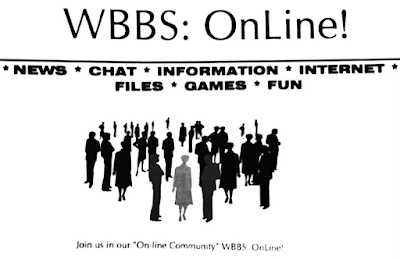© Mark Ollig
It was February 1978, and a severe blizzard kept Chicago Area Computer Hobbyists Exchange (CACHE) members from meeting in person.
During this blizzard, two members, Ward Christensen and Randy Suess, created the world’s first public telephone dial-up computer bulletin board system (BBS).
During and after the blizzard, CACHE members dialed into the BBS with their home computers and modems to exchange files and engage in real-time text-based conversations, fostering an online camaraderie despite their physical distance.
Soon, other computer hobbyists were configuring computers with modems and BBS software.
Before the web became widespread, a BBS was the online platform among personal computer users, bridging physical boundaries and fostering virtual communities for discussion, software sharing, camaraderie, and commerce.
In the late 1980s, I read Boardwatch, a popular computing magazine providing in-depth coverage of computer bulletin boards and managing one as a system operator (SysOp).
Many computer hobbyists, including myself, were eager to participate in this new virtual online frontier.
I used Galacticomm’s MajorBBS software, an operating system specifically designed for running bulletin boards.
After installing the software from 3.5-inch disks onto a dedicated computer, I programmed the BBS configuration.
Winsted Bulletin Board System was the name of my BBS and advertised as WBBS: OnLine!
To promote it, I distributed paper flyers, wrote a newspaper article, and installed WBBS license plates on my car - which captured some attention.
WBBS used six analog phone lines connected to six 14.4 kbps Hayes modems configured with the communication protocol: 8 data bits, no parity bits, and one stop bit.
As the SysOp, I maintained the BBS, which handled up to six simultaneous dial-up connections.
Computer users dialed into the BBS using a terminal emulation program with telecommunications software such as ProComm, Kermit, PC-Talk, and Qmodem to access bulletin board systems.
During the early days of the WBBS platform, members participated in real-time texting, exchanged BBS electronic mail, took part in text-based games, polls, and questionnaires, and shared public-domain DOS software.
The virtual chat rooms provided a platform for computer users to spend considerable time discussing current trending topics, building camaraderie, and appreciating the virtual online experience.
Members of WBBS could send and receive internet emails using a batch software program automatically executed from the BBS after midnight via a remote telephone dial-up connection program I used called Unix-to-Unix Copy (UUCP).
The long-distance telecommunications provider, USLink, offered this service, which performed the transfer of internet email for my BBS through their direct internet connection.
Many BBSs used UUCP to handle internet email.
BBSes were developing technologies such as file transfer protocols, message boards, online gaming, email, social media chat rooms, real-time instant messaging, and a virtual community of camaraderie.
Most WBBS members were from the Winsted and Lester Prairie area, as it was a local call to the BBS.
With the popularity of the Windows operating system, Galacticomm subsequently developed a client-server graphical user interface (GUI) BBS version named Worldgroup Server, which I installed.
After downloading the client software, users could connect to the BBS and easily navigate through a colorful hyper-texted Windows graphical user interface using a mouse.
In 1993, I gave a presentation on a specially configured business BBS during the Winsted Civic and Commerce Association business luncheon.
The presentation highlighted the various features of the BBS, including its user-friendly interface and ability to support multiple users.
I used my Hewlett-Packard OmniBook 300 laptop and Dell 486DX2 66 desktop computer for the demonstration.
My Dell desktop computer ran the BBS software program, simulating a business online store, and my OmniBook laptop acted as the customer’s computer used for dialing into the BBS.
Each computer and modem were connected to a dedicated phone line.
During the luncheon, I provided attendees with a live dial-up BBS experience.
I showed how a Bulletin Board System could be used as an e-commerce platform by having online customers use a store menu system, enabling them to browse the product and service information and easily make online purchases.
The luncheon attendees appreciated the BBS’s potential to enhance business communication and serve as a centralized hub for local online business collaboration.
Many walked up to examine the BBS setup and carefully reviewed the computer monitors’ information.
Some dialed into the BBS from the laptop.
The local business community’s interest in the demonstration of the BBS thirty years ago remains in my memory.
According to a report by InfoWorld magazine in 1994, there were around 60,000 BBSes in the US, with approximately 17 million online members.
The following year, the presence of commercial service providers offering low-cost internet and web connectivity and access to a wider range of online services (including commerce) hastened the swift decline of BBSes.
By the early 2000s, the era of large commercial and smaller BBS platforms that once dominated the online landscape ended.
Some BBSes still exist, although they are mainly accessed for nostalgia.
Computer bulletin board systems fostered a culture of online collaboration and communication and laid the foundation for today’s internet-connected world.

